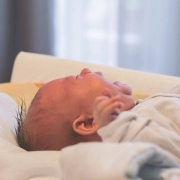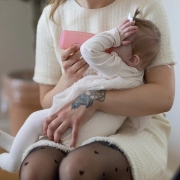Parenting is a journey filled with decisions that can be both challenging and controversial. One such topic that often sparks debates among parents and experts is the idea of letting a baby cry it out as a sleep training method. Advocates argue that it helps babies learn to self-soothe and establish healthy sleep patterns, while opponents express concerns about potential negative effects on the child’s emotional well-being. In this blog post, we’ll explore both sides of the debate and provide some insights for parents considering the cry-it-out method.
What Is The Cry-It-Out Method
The cry-it-out (CIO) method, also known as Ferberization or graduated extinction, involves allowing a baby to cry for gradually increasing intervals before providing comfort. The goal is for the baby to learn to fall asleep independently without relying on parental intervention.

Pros of the Cry-It-Out Method
Establishing Independence: Advocates argue that the cry-it-out method helps babies develop self-soothing skills, allowing them to become more independent sleepers.
Consistent Sleep Patterns: Proponents suggest that the method helps establish consistent sleep patterns, contributing to better overall sleep quality for both the baby and parents.
Parental Well-being: Some parents find that the cry-it-out method helps reduce stress and exhaustion, as it may lead to quicker sleep training and longer stretches of uninterrupted sleep.
Cons of the Cry-It-Out Method
Emotional Impact: Critics express concerns about the potential emotional impact on the baby, arguing that prolonged crying may lead to feelings of abandonment and increased stress.
Attachment Issues: Some experts caution that repeated instances of letting a baby cry it out might affect the parent-child attachment, particularly during the sensitive early months.
Individual Differences: Every baby is different, and what works for one may not work for another. Some babies may not respond well to the cry-it-out method, leading to increased stress for both the baby and parents.

Balancing Act: Tips for Parents Considering Cry-It-Out
Age Matters: Experts generally recommend waiting until a baby is around 6 months old before attempting cry-it-out, as younger infants may have different needs.
Consistency is Key: If you decide to try the cry-it-out method, it’s crucial to be consistent in your approach. Inconsistency can confuse the baby and impede progress.
Check-in Approach: Some variations of the method involve periodic check-ins to reassure the baby without picking them up. This can help strike a balance between allowing independence and providing comfort.
The cry-it-out method is a personal choice that depends on the needs of both the baby and the parents. It’s essential for parents to consider their child’s temperament, age, and individual needs when deciding on a sleep training method. Ultimately, every family is unique, and finding an approach that aligns with both the baby’s well-being and the parents’ needs is key to fostering a healthy sleep routine.









